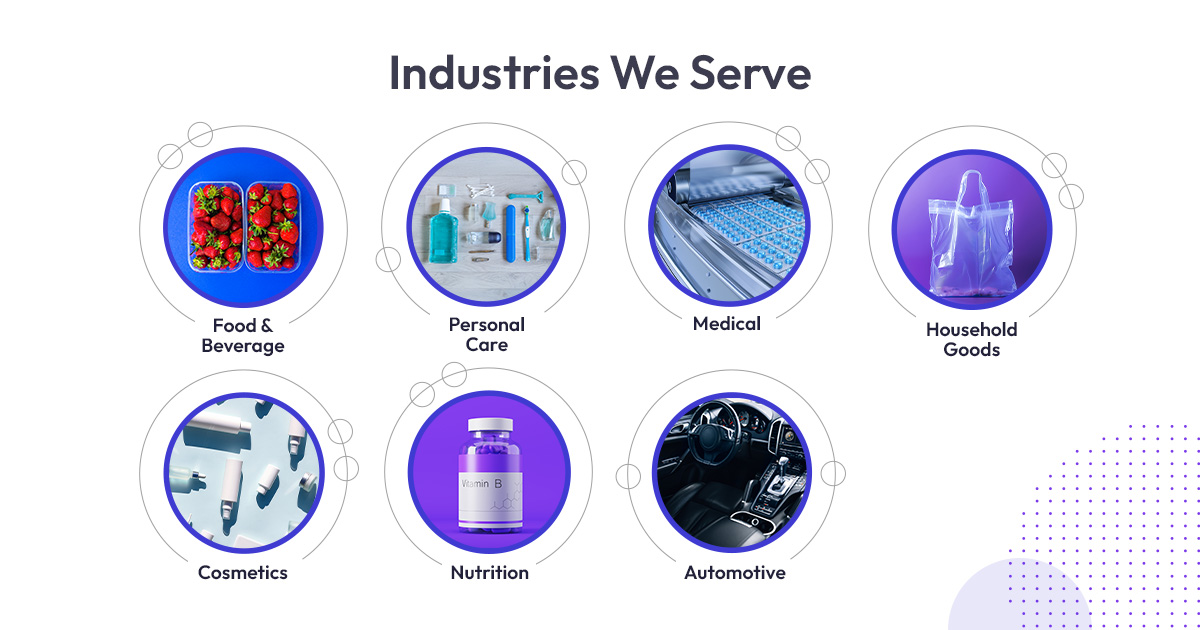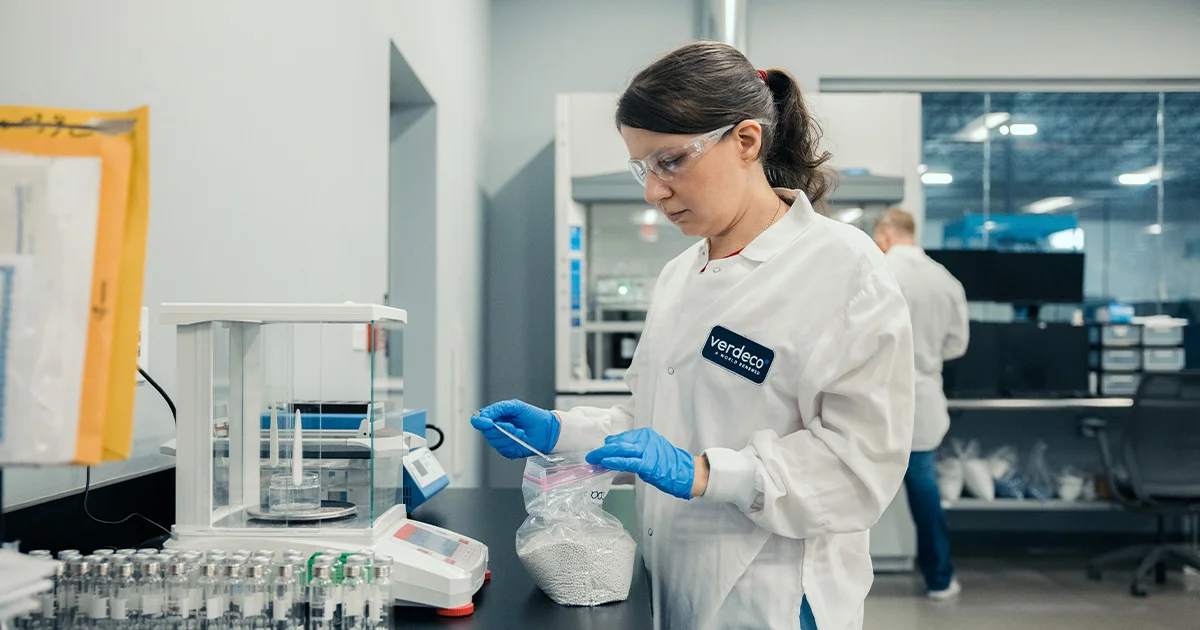Plastics are everywhere, and we interact with them every day. And, chances are high that some of the plastic you see every day is PET — or possibly rPET, the recycled version of PET that is becoming increasingly common in the market. But while the terminology may be similar, what are the differences between these materials? What about the similarities? Let’s take a closer look and find out. Let’s take a closer look at the differences, similarities, and impacts of PET and rPET.
What is PET?
PET, or polyethylene terephthalate, is a polymer of ethylene glycol and terephthalic acid. It is the most common type of plastic resin, used in products ranging from food and beverage to clothing and containers. Virgin PET is made from crude oil and natural gas extracted from the earth, and the resulting product is a lightweight, clear, and shatterproof plastic. You can tell if a container is made of PET by checking for the number 1 recycling code. PET provides a long shelf life for products and is commonly used by many companies.
What is rPET?
The term rPET stands for recycled polyethylene terephthalate and is, as the name suggests, a plastic made of recycled PET. To create rPET, PET containers are brought to a recycling facility where they are ground, cleaned, dried, and turned into rPET flakes or pellets. The beauty of rPET is that it can be used to make almost any product that’s made with virgin PET. As such, the demand for this material continues to increase over time.
PET & rPET Similarities
Although they have slightly different names, rPET and PET as final products are interchangeable. In fact, they are so nearly identical that they both fall under recycling code 1. They also share many of the same properties, including:
- Shatterproof
- Lightweight and easy to transport
- Recyclable (PET can be recycled again and again)
- Customizable
- Effective barriers, giving food and beverages a longer shelf life
Because PET and rPET are so alike, they are often used together by companies that are looking for a more sustainable solution but lack the resources necessary to create 100% rPET packages or containers.
PET & rPET Differences
As suggested by the many similarities, there aren’t many notable differences between PET and rPET if we only compare them as materials. The most significant difference is that while PET produces an incredibly clear plastic, rPET can tend to be a little hazy in comparison. The difference is usually only noticeable in containers made from 100% rPET, and why many companies opt to use a blend of PET and rPET. Aside from this, they are almost identical.
However, when we look at the costs, production methods, and environmental impacts of both PET and rPET, clear differences become apparent between these two materials.
Environmental Impact of rPET
Environmental impact is one of the most apparent differences between PET and rPET. PET is made with limited natural resources extracted from the earth. Additionally, the process of creating virgin PET tends to be energy-intensive. Although PET is highly recyclable, many PET products find their way into landfills, where they take 700+ years to decompose.
rPET is a more sustainable alternative, created with less energy and producing 79% fewer greenhouse emissions than virgin PET production. rPET has a carbon footprint of less than 25% of its un-recycled counterpart.It contributes to less waste in landfills, leaves less impact from extraction on the Earth, and can even help reduce CO2 emissions from transportation because of its lightweight properties. From an environmental perspective, there’s no comparison — rPET is a far more sustainable option.
Economic Impact of rPET
From an economic lens, there are a few things to consider for both PET and rPET. While rPET continues to gain traction as a go-to material for companies, it is not as widely produced as virgin PET, making it more difficult to find and more expensive to produce. However, many states and countries have implemented or are in the process of drafting policies that reward sustainable practices and tax less sustainable efforts, giving companies a monetary incentive to switch from PET to rPET.
Some studies have indicated that using more sustainable materials in packaging could also elevate a company’s reputation in the eyes of consumers. Nielsen’s Global Sustainability Report found that 81% of respondents said businesses should implement programs to reduce their environmental impact. Because of the increasing consumer demand for more sustainable options, the research indicates that recycled and recyclable packaging can help drive sales for companies.
Verdeco’s Innovative Solution: Customizable rPET with Clarity Equal to Virgin PET
At Verdeco, we see a future where rPET isn’t just a novelty but a viable material option across industries that regularly use PET. Our vision is to make a zero-waste economy possible by creating sustainable plastic solutions. Every innovation we champion is customer-centric and inspired by our belief that through this purposeful development, we can help make an immediate, positive impact in the world and create a more sustainable future.
One innovation that we are particularly excited about is creating rPET with clarity equal to that of virgin PET — in other words, we’re eliminating the haze. With this innovation, we hope to make rPET an even more attractive alternative to virgin PET and to be the supplier of choice for companies interested in using 100% rPET in their packaging. If you ask us, the choice is clear!
To learn more about Verdeco and how we’re changing the world, visit verdecorecycling.com.



